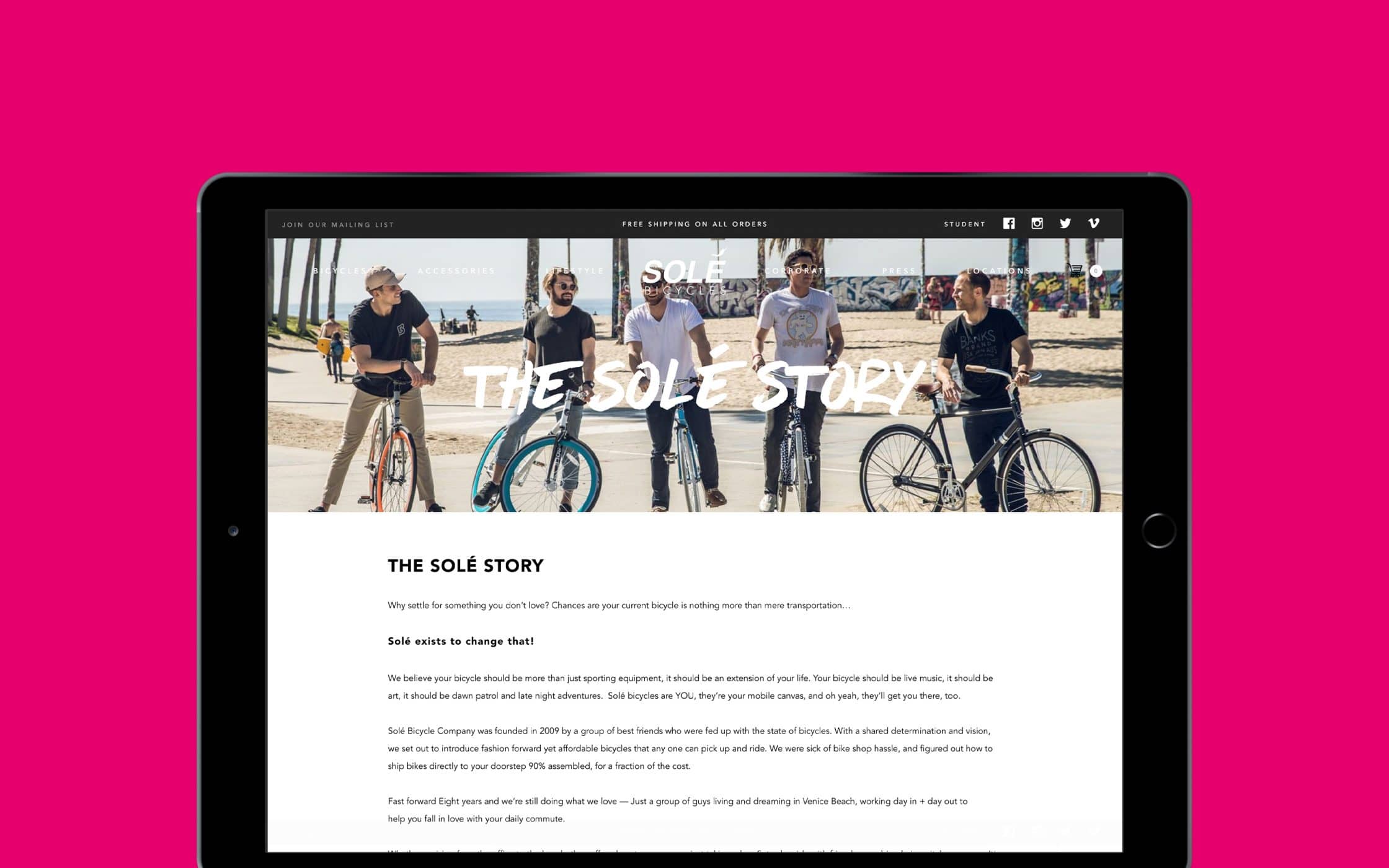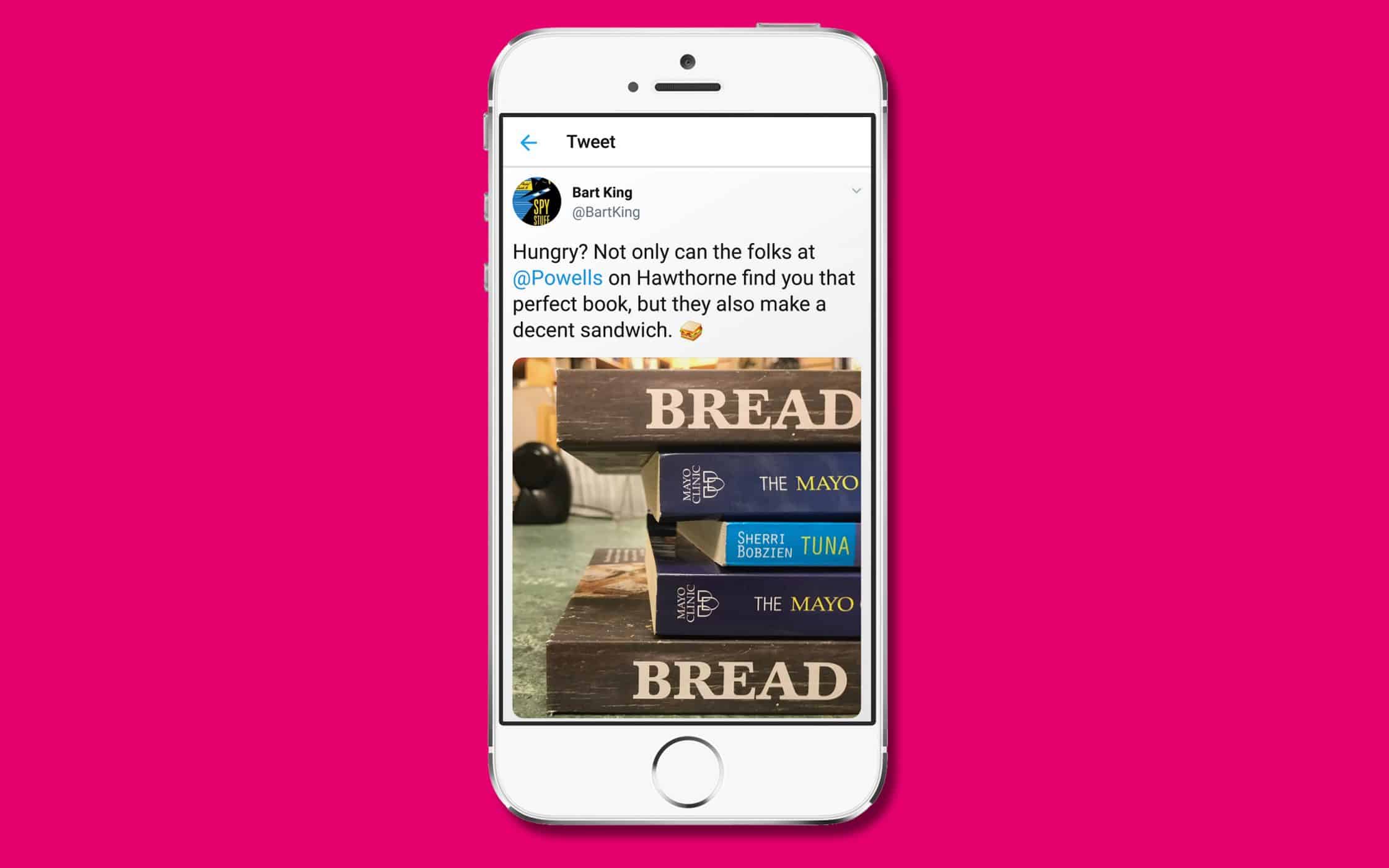What is niche marketing? The truth about knowing your tribe

Think you need to cast a wide net to create a successful brand? Think again.
The truth is that most companies accomplish incredible things when they start with a narrow focus. The more specialised your company is, the more unique you become. After all, while there might be endless branding and advertising agencies out there, there’s only a handful that specialise in company naming, brand building, and visual asset creation.
Whenever an entrepreneur starts a new venture, the first thing they need to ask themselves is: “What makes my idea special?” Focus is at the heart of a genuinely sustainable and scalable business, and it demands a well-planned niche marketing campaign.
So, what is niche marketing?
By the time you’ve finished reading this article, you’ll have a niche marketing definition that you can use to differentiate your company and accelerate its growth.
We’re going to look at how a narrow approach can lead to bigger, broader results in the long-term, by giving you a way to develop deeper connections with every customer.
Are you ready to find your niche?

What is niche marketing? Your niche marketing definition
To understand the question “What is niche marketing?” you first need to know what a “niche market” is.
A niche market is a subset of a broader target audience. For instance, if you’re a company selling gluten-free protein bars, your wider audience may be exercise and fitness enthusiasts. However, you’re also explicitly looking for people who want to avoid eating gluten. Many examples of niche marketing differentiate their audience according to things like price preferences, gender, income brackets, and specific hobbies.
So, why do you need to define niche marketing? The simple answer is that you can’t be everything to everyone. When you first create a business, it’s tempting to think that your product or service could help everyone. After all, everyone wants a great audio experience, a fantastic brand-building agency, or a great television.
However, while aspects of your product or service will have a broad appeal, more unique features are likely to attract a specific audience. For instance, while everyone might appreciate a good TV, only a specific sub-section of the market will be willing to pay extra for the very top model with a premium price tag.
A niche marketing strategy allows you to move away from the generalised approach to business that leaves you struggling to connect with everyone. With niche marketing, you invest your time and money into only the people most likely to appreciate, endorse, and fund your brand.
As every industry and marketplace grows more saturated, niche marketing gives you another way to set yourself apart from the crowd. With your niche marketing definition, you can show your customers exactly what you do, and precisely who you’re able to help. While this could mean that you miss out on a few customers less-suited to your brand, it also means that you end up with more leads capable of showing loyalty to your company.

The benefits of next-level niche marketing
Understanding the answer to “What is niche marketing” also means figuring out why this approach is so valuable to your company.
Importantly, there are different levels of niche marketing. For instance, some of the best niche marketing strategy examples centre around companies that specifically cater to a smaller audience. For example, FreshBooks separates itself from other accounting software solutions by branding themselves as a service for “small businesses and freelancers.”

Other companies use segmentation to narrow a larger audience down into multiple niches that they target using separate marketing strategies. Whichever option you choose, a more refined focus will improve your marketing efficiency.
When you target a specific demographic, you begin to build your brand identity as an expert in your field. Since customers naturally look for “specialists” to help with their most pressing problems, you’re more likely to earn the trust of your consumer base. Additionally, a niche marketing strategy will:
- Separate you from the competition: Niche marketing gives you a way to step away from the game by giving you a distinct focus. This both clarifies your position in your chosen market and means you don’t have to compete as much for your target audience.
- Save you money: With niche marketing, you can expect a bigger ROI. After all, if you’re only spending money trying to target the people most likely to buy your products and services, the chances are that you’ll waste less cash.
- Increase brand loyalty: Your niche marketing strategy will give you a way to connect with your true tribe. These hardcore ambassadors will make up a crucial component of your business, and even help you to attract new customers through referrals and testimonials.
Creating a niche marketing strategy: Tips for success
Now you know how to define niche marketing, you’re probably ready to start building your campaign. As you’ve seen above, niche marketing can be a powerful strategy, giving focus to your brand, and allowing you to create credibility in a specific space.
The biggest challenge is that a niche marketing strategy is often more complicated than the traditional spray-and-pray approach to advertising. You need to learn how to speak your customer’s language and reach them on their preferred channels. When your target customer base is small, this process can take some time and even the help of a niche marketing company.
1. Identify your interests and strengths
Often, the best way to select a niche market for your brand is to examine your USP. Knowing what makes your company unique will help you to determine what kind of customer your services and solutions are best suited to. However, if you don’t have a USP, or even a product or service in mind for your company yet, then start by looking at your strengths and interests.
Ultimately, building a company around something that you’re good at is always a good idea. Think about the people that you like working with, and the problems you wish someone would solve for you, and people like you. Choosing a niche that hits close to home will help with everything from building buyer personas, to designing product features.
2. Create your user personas
Once you know your niche, you’ll need to create user personas to guide your niche marketing strategy. Remember, just because you’ve found your basic niche doesn’t mean that every customer in that niche is the same. The more you learn about your target audience and marketplace, the more you may discover that you need to create multiple user personas to suit your customer base.
Your personas will help you to approach every promotional decision you make from the perspective of your target audience. Remember to include as many details as you can in these documents, from the age of each customer to their location, background, and hobbies.

3. Know your industry and competition
Choosing a niche marketing strategy should mean that you have fewer competitors to go up against when you’re finding your place in your industry. However, there’s a good chance that there are some people out there similar to you that can offer products with many of the same features. Make a list of the competitors with the closest match to your offering.
A competitive analysis with the help of your niche marketing agency will help you to create marketing strategies that focus on showing audiences what you can do, that no-one else can. Your competitor analysis may also help you to come up with additional ideas to make your niche marketing campaigns stand out.
4. Choose marketing platforms carefully
Remember, once you define niche marketing for your business, you’ll need to focus speaking to your specific target audience. It’s not enough just to choose the right words and phrases that appeal to your target market. You’ll also need to make sure that you’re posting your messages on the platforms where they spend the majority of their time.
The good news is that many of today’s social media marketing platforms and email marketing tools allow you to go much deeper with your targeting efforts. Today, it’s possible to pay for advertisements that specifically reach out to people with the right combination of interests, demographics, and background experiences.
Remember, the great thing about niche marketing is that you don’t have to be everywhere at once.
5. Test, adjust and repeat
As with most marketing campaigns, it’s generally not a good idea to set up your niche marketing strategy and forget all about it. Niche marketing, even more-so than general promotion, requires careful monitoring to make sure that you’re getting the attention you need. What’s more, by tracking your marketing efforts you can make sure that your initial user personas are accurate. Sometimes, companies find that their target market can change over time.
With careful tracking, you’ll reduce your risk of losing customers, and wasting money on strategies that don’t work. Keep an eye on your metrics and be ready to adjust your campaigns at a moment’s notice.

Features of a fantastic niche marketing campaign
By this point, you probably have a pretty good niche marketing definition in mind.
However, to make sure you truly understand the answer to the question “What is niche marketing,” we need to address one particularly important issue.
As a marketing and branding company, the team at Fabrik often interacts with businesses who believe that crafting a niche marketing strategy is all about speaking specifically to a very small, focused audience. While this is true to some extent, there’s more to niche marketing than simply narrowing your view.
A niche doesn’t just have to be a small portion of a bigger cake – it can be an idea that your audience never fully considered before. For instance, just look at how popular gluten-free food became after people began to realize that cutting certain foods out of their diet could make them healthier. Or consider how high-tech smartphones became the norm when everyone wanted to be a part of the forward-thinking tech niche.
Exceptional niche marketing speaks both to your ideal users, and the people in your audience who don’t realise that they belong to your tribe yet. Ultimately, this means a great niche marketing strategy definition comes down to 3 key features:
Niche marketing feature 1: Storytelling
For many brands, creating a niche marketing strategy is all about finding a way to not only sell a product but a lifestyle or identity too. Niche products all consumers to define themselves as specific “types” of people. Telling your customers your unique story could mean that they decide your brand should be a part of their own narrative.

Sole Bicycles is an excellent example of a niche marketing brand who built a successful campaign around an inspirational story. The story section on the Sole Bicycles website gives you an insight into the kind of customers the company wants to serve, and it also invites customers to become a part of that appealing niche. What avid cycler doesn’t like the idea of a bike company that views their bikes as “art” and “epic.”
Niche marketing feature 2: Exclusivity
A lot of companies worry about “niching down” because they’re concerned that they’ll be cutting a portion of potential leads out of their target audience. However, the truth is that niche marketing allows you to appeal to both a specific set of customers and a wider demographic through the psychological phenomenon of “exclusivity.”
Niche marketing allows you to set yourself apart from the crowd by appealing to the underserved and under-appreciated markets in your chosen industry. By doing this, you end up with a more loyal, dedicated and appreciative selection of customers.

Look at the Firebox brand, for instance. Firebox defines itself as being a company that’s “not for everyone,” with its unique range of quirky products. Yet, in the Firebox “Not for Everyone” vision statement, the business defines a target audience that makes people want to be a part of this imaginative, independent and alternative tribe.
Niche marketing feature 3: Differentiation
Finally, differentiation is at the sole of any niche marketing strategy. While countless elements can contribute to the failure or success of your brand, you need to be bold if you want to stand out in today’s ever-more cluttered business world.
Look at Budweiser, for example. In a Super Bowl campaign called #NotBackingDown, the alcoholic drinks company launched their own niche marketing strategy. Budweiser identified itself as a company specifically “not” for craft beer lovers. The brand embraced the idea of being a bigger, more focused company, a step apart from the growing trend of craft brewers. This definition allowed Budweiser to reach out and welcome customers into a specific tribe of beer lovers.
The 3 best niche marketing strategy examples
Because niche marketing is all about connecting with a very specific audience, there’s no one-size-fits-all set of rules that can apply to any company. However, by looking back at examples of niche marketing done right, we can learn a thing or two about what it takes to connect with a smaller marketplace.
To help you start your niche marketing strategy on the right foot, we’ve put together a list of some of the best niche marketing examples we could find and the lessons that you can learn from each of these campaigns.
1. Lefty’s: Know your market
Let’s start with the most obvious golden rule of niche marketing. Just because you’re only appealing to a very specific range of people, doesn’t mean you should be lazy when researching your target market. You’re going to have to work even harder to captivate a specific niche audience.

A great example of a niche marketing strategy that took the needs of their audience into account comes from Lefty’s: The Left-Hand Store. The Lefty’s brand launched to support the 10% of people in the world who use their left hand more than their right. Every part of their promotional strategy is designed for left-handed people, including their logo, which uses a left-handed thumbs-up in the graphic.
2. Powell’s Books: Don’t just advertise, connect with your audience
While understanding your audience is essential for your niche marketing strategy, it’s also crucial to make sure that you know how to speak to that group on a deeper level. A one-size-fits-all marketing plan won’t be enough. Instead, you’ll need to build an advertising strategy that speaks specifically to the customers that matter most to your business.
Look at Powell’s City of Books store in Portland, in the US. This small company wants to focus on selling real books from local authors, in a world where eBooks and digital files are growing increasingly popular. To help promote their efforts, the company doesn’t just advertise online; it hosts real in-person events for people in search of more authentic experiences.

Powell’s Books also knows how to connect with their audience through social media, answering their questions about literature, and even posting interesting podcasts about popular novels. They’re not averse to the odd influencer marketing strategy either:
3. Wistia: Listen to your customers
Finally, to get your niche marketing strategy right, and ensure it keeps working for years to come, you need to do a lot more than just research and understand your target audience. The best niche marketing examples come from people who continue to listen to their niche customers and respond to their needs.
Monitoring every mention of your brand on social media and other digital forums isn’t easy. However, the more you listen to your target market, the more likely you are to build a reputation for your brand that speaks to that all-important subsection of customers you call your tribe.
Since you have fewer customers to target than a company investing in mass marketing, you can afford to devote more time to listening to what they say. You may even find that the things you hear help you to create a more memorable experience for your customers too.

For instance, video hosting firm Wistia listened to the needs of their customers and decided to upgrade the number of videos you could host on your “free” service from three to 50. The response on social media was overwhelming, and Wistia managed to grow its user base from a measly 3,000 to 110,000 as a result. Though free users may not be paying for their service, Wistia is still spreading brand awareness and earning income through advertisements on their free platform. It’s a win/win.
Time to speak to a niche marketing agency?
The growing power of niche marketing in today’s digital marketplace proves that you don’t have to be everything to everyone if you want to survive.
It seems as though the brands with the most focus are the ones that truly thrive.
Niche marketing gives you an opportunity to stop competing with other major brands to connect with an over-served and spoilt audience. Rather than bringing another flavour of the same product to a group of dispassionate people, you offer a genuine solution to a poorly-targeted space.
With a niche marketing strategy, you can uncover the opportunities that lie within a previously untapped segment of the market, opening the door for success that you couldn’t replicate anywhere else. The companies that thrive in the niche marketing world are often the ones with the most impressive reputations and the most loyal customers. After all, you’re not just doing the same thing in a different way, you’re reaching out to people who struggle to find a solution in the existing marketplace.
Of course, like any marketing strategy, niche campaigns take time, focus and plenty of planning. You need to get to know your audience, find out what they truly need from you, and deliver value in a way that people have never seen before.
If all that seems a little overwhelming, don’t panic. A niche marketing company like Fabrik could be just the partner you’ve been looking for. Reach out to us today for tips on how you can find and serve your tribe.
If you enjoyed this article, you might enjoy these too:
— Branding essentials: How to bulletproof your business
— The age of post luxury: What now for luxury branding?











